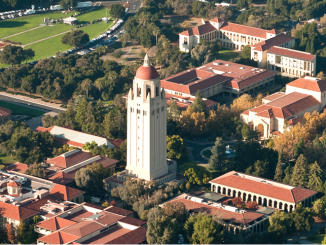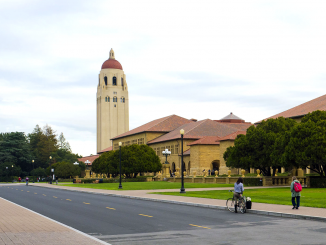
BY ALLISON LEVITSKY
Daily Post Staff Writer
A showdown over Stanford’s housing contribution to its 2.3 million-square-foot expansion is expected at the Santa Clara County Board of Supervisors meeting this morning (Sept. 25) — with more than $110 million at stake.
The university wants the county to hold off on two ordinances that would charge Stanford a developer fee based on the square footage of new buildings and require the university to build affordable housing on or near campus.
Stanford is also offering less than 30% of a developer fee proposed by the county, claiming “serious mathematical and logical errors” led to the $68.50 rate, or $155.8 million, that the county wants.
The university is offering between $17 and $20 per square foot, or between $38.7 and $45.5 million, and has supplied the county with a chart that shows its recalculation of the county’s supposed mistakes.
No other nonprofit university in Santa Clara or San Mateo counties is required to pay an affordable housing impact fee, and the highest fee charged to for-profit commercial developers is $35 per square foot, according to Stanford.
Development agreement proposed
Yesterday, university officials sent a letter to the Board of Supervisors asking to delay the two proposed ordinances in favor of an “interest-based discussion” that would result in a development agreement.
Typically, negotiations on such agreements take place in private meetings.
In the letter, Stanford Vice President of real estate Robert Reidy suggested the five-member Board of Supervisors form a two-member committee to negotiate with the university. Reidy said the county can “ensure transparency” by having the committee report back to the board in November with an update on the negotiations, then publicly present a draft development agreement at the formal hearings on Stanford’s proposed expansion next year.
That likely means the public wouldn’t see the proposed development agreement until after the bulk of the negotiations have taken place.
“Stanford has proposed a development agreement negotiation process that is fully transparent and allows for robust community input,” Stanford land use spokesman Joel Berman told the Post in an email yesterday afternoon. “We firmly believe that a development agreement is the best approach for guaranteeing the delivery of affordable housing now, both on Stanford lands and in the broader community.”
Stanford is also arguing that the ordinances would be less effective than the development agreement would be at housing 9,600 new students and workers and mitigating their impacts on traffic.
Berman said the county’s proposed fee wouldn’t be as effective as a development agreement because the fee would be contingent upon Stanford’s rate of growth over almost 20 years “with no guarantee of how many units would be created, for what affordability levels and when.”
Singling out Stanford
According to the university, the two ordinances “unfairly single out Stanford” to address a countywide housing crisis without applying similar requirements to other institutions contributing to the problem.
Stanford is also proposing to establish an affordable housing fund which would be able to garner additional investments and grants, allowing it to replenish and build more housing over time.



Stanford’s argument that it is being singled out is a joke. There is no employer of 35,000 people on 8,180 acres of land in Santa Clara County. None.
Facebook is planning on housing 35,000 employees in San Matteo. Google currently has between 15,000 and 20,000 employees in the Bay Area. I couldn’t easily find the numbers for the various HP companies, Intel, or Apple.
Much of Stanford land is used by others (industrial park, open space). Not sure what the joke is, but I do agree discussion of numbers and data would be welcome.